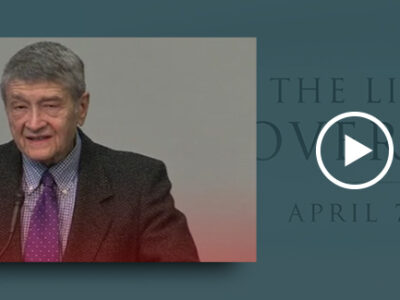Operation Iraqi Freedom (OIF) was the most impressive use of combined arms to achieve a decisive victory in recent military history. Only Operation Just Cause, the hydra-like “take down” of Panamanian dictator Manuel Noriega in December 1989 came close to demonstrating what superbly trained and equipped forces can accomplish in modern warfare. Most notably, land forces achieved dominant maneuver not only in the Iraqi desert-where this is to be expected-but also in urban warfare; and that is unprecedented. Ground forces also did something air power alone cannot do short of wreaking massive damage on infrastructure and civilians-the kind of collateral damage associated with warfare of annihilation-they affected regime change, doing so rapidly, decisively and with a minimum of bloodshed.
Almost a week before President George W. Bush declared combat operations in Iraq over on Friday April 25th, Secretary of Defense Donald Rumsfeld summarily fired Army Secretary Thomas White for not toeing the Rumsfeld line that precision strikes combined with lighter forces must be the wave of the future. The aftermath of a clear demonstration of the continuing need for robust and hard hitting battlefield steel implicit in the seventy-ton M1A2 Abrams tank seems an ironic time for Rumsfeld to rid himself of a service secretary who advocated a viewpoint confirmed by what Rumsfeld touted as “a military achievement without precedence in modern warfare”: a three-week campaign from Kuwait to victory in Baghdad.
Certainly, air power played a key role in OIF. Once again airmen demonstrated the marvelous accuracy inherent in aerially-delivered precision guided munitions. This capability provides enormous leverage by multiplying the advantages high-tech weaponry offers when coupled with innovative leadership, realistically trained personnel and-above all-a strategy appropriate to the war at hand. In OIF the armed forces of the United States left no doubt about what they can do by taking full advantage of the capabilities each service brings to the battlefield.
While diverse challenges confront the United States as the first quarter of this century unfolds, one constant can be identified. Regimes like those of Manuel Noriega and Saddam Hussein survive with land forces. They sustain themselves with conventional forces most often composed of outdated tanks, aging armored personnel carriers and tube artillery, along with “special security” forces-the twenty-first century equivalent of Hitler’s SS and Storm Troopers-and small air forces. With a base sticker price of $25 million dollars for an average fighter-plane without the really high-tech options, air forces in these countries tend to be small and obsolescent: perhaps useful for intimidating neighboring countries but so outclassed by US air power that flying equates to dying. That leaves land forces as the major conventional challenge facing the US military in place like North Korea, Syria, Iran and Cuba.
Within the Pentagon the most adamant advocates of an “air centric” strategy remain convinced that quick victories result from precision strikes that destroy “critical nodes” at the “vital centers” of the communications and power networks. What they miss is that heavy forces, even those made up of obsolescent former Soviet tanks and armored personnel carriers, can and will pose a serious threat to lightly armed forces. The better solution might be to find ways to rapidly deploy heavy forces, like Abrams tanks, M24 Bradley fighting vehicles and, yes, the now-canned Crusader artillery system to even the most distant battlefields. The technology is available in rapid sealift platforms – vessels that could move a brigade across oceans at speeds in excess of sixty knots. The key to operational success is to get into the fight quickly and with overwhelming power.
In the decade following the brilliant successes of Operation Desert Storm, much of which derived from American air power, the Army and the Air Force entered a bitter contest for resources and missions. To fully understand inter-service squabbling, one would have to have had two children below the age of five and, as every parent knows, strong parenting is the key to controlling the sandbox. From the “highest levels” down, the Clinton administration demonstrated a lack of adult leadership. In the Pentagon, Clinton’s weak-willed civilians, overly focused on political correctness rather than combat capabilities, wielded spaghetti-like rods in their quest to further the Revolution in Military Affairs. Thankfully, Rumsfeld and his cohorts are not of their ilk. Hopefully, however, the Secretary will appreciate the lessons of history, the experience of all his service leaders and the notion that in the future getting it about right is about the best we can do.




